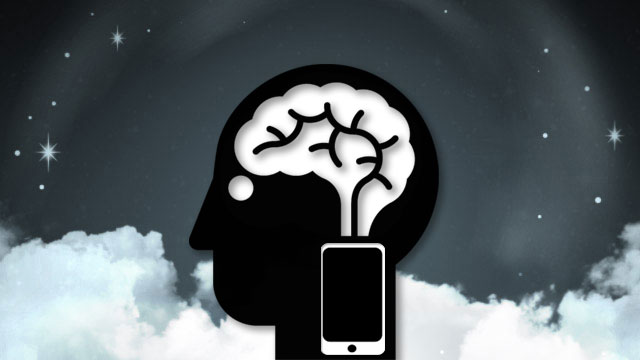April McCarthy, Prevent Disease
You can fake a smile, but your phone knows the truth. Depression can be detected from your smartphone sensor data by tracking the number of minutes you use the phone and your daily geographical locations, reports a Northwestern Medicine study.
More and more smartphones are able to see what many of us cannot.
The ongoing use of this communications technology, as compared to computer-based use such as email, is linked to increased psychological distress and reduced family satisfaction.
Spending more time on a mobile phone has been confirmed to increase your risk of getting brain cancer by as much as 40 percent, but it’s also linked with something else–depression.
The more time you spend using your phone, the more likely you are depressed. The average daily usage for depressed individuals was about 68 minutes, while for non-depressed individuals it was about 17 minutes.
Spending most of your time at home and most of your time in fewer locations — as measured by GPS tracking — also are linked to depression. And, having a less regular day-to-day schedule, leaving your house and going to work at different times each day, for example, also is linked to depression.
Based on the phone sensor data, Northwestern scientists could identify people with depressive symptoms with 87 percent accuracy.
“The significance of this is we can detect if a person has depressive symptoms and the severity of those symptoms without asking them any questions,” said senior author David Mohr, director of the Center for Behavioral Intervention Technologies at Northwestern University Feinberg School of Medicine. “We now have an objective measure of behavior related to depression. And we’re detecting it passively. Phones can provide data unobtrusively and with no effort on the part of the user.”
The research could ultimately lead to monitoring people at risk of depression and enabling health care providers to intervene more quickly.
The study will be published July 15 in the Journal of Medical Internet Research.
The smart phone data was more reliable in detecting depression than daily questions participants answered about how sad they were feeling on a scale of 1 to 10. Their answers may be rote and often are not reliable, said lead author Sohrob Saeb, a postdoctoral fellow and computer scientist in preventive medicine at Feinberg.
“The data showing depressed people tended not to go many places reflects the loss of motivation seen in depression,” said Mohr, who is a clinical psychologist and professor of preventive medicine at Feinberg. “When people are depressed, they tend to withdraw and don’t have the motivation or energy to go out and do things.”
While the phone usage data didn’t identify how people were using their phones, Mohr suspects people who spent the most time on them were surfing the web or playing games, rather than talking to friends.
“People are likely, when on their phones, to avoid thinking about things that are troubling, painful feelings or difficult relationships,” Mohr said. “It’s an avoidance behavior we see in depression.”
Saeb analyzed the GPS locations and phone usage for 28 individuals (20 females and eight males, average age of 29) over two weeks. The sensor tracked GPS locations every five minutes.
To determine the relationship between phone usage and geographical location and depression, the subjects took a widely used standardized questionnaire measuring depression, the PHQ-9, at the beginning of the two-week study. The PHQ-9 asks about symptoms used to diagnose depression such as sadness, loss of pleasure, hopelessness, disturbances in sleep and appetite, and difficulty concentrating. Then, Saeb developed algorithms using the GPS and phone usage data collected from the phone, and correlated the results of those GPS and phone usage algorithms with the subjects’ depression test results.
Of the participants, 14 did not have any signs of depression and 14 had symptoms ranging from mild to severe depression.
The goal of the research is to passively detect depression and different levels of emotional states related to depression, Saeb said.
The information ultimately could be used to monitor people who are at risk of depression to, perhaps, offer them interventions if the sensor detected depression or to deliver the information to their clinicians.
Future Northwestern research will look at whether getting people to change those behaviors linked to depression improves their mood.
“We will see if we can reduce symptoms of depression by encouraging people to visit more locations throughout the day, have a more regular routine, spend more time in a variety of places or reduce mobile phone use,” Saeb said.
Sources:
jmir.org
This article is offered under Creative Commons license. It’s okay to republish it anywhere as long as attribution bio is included and all links remain intact.






